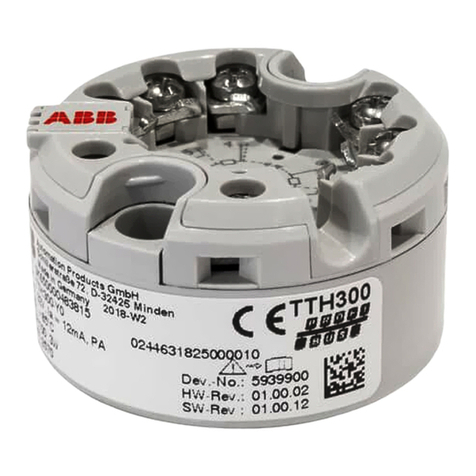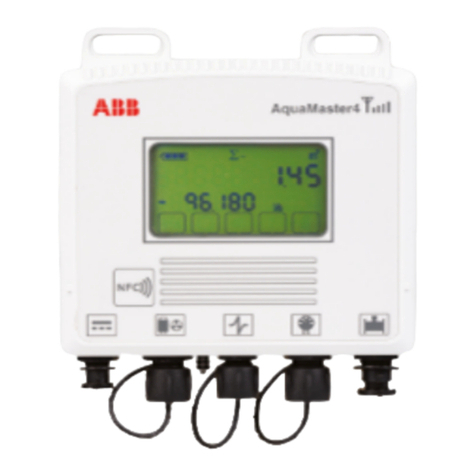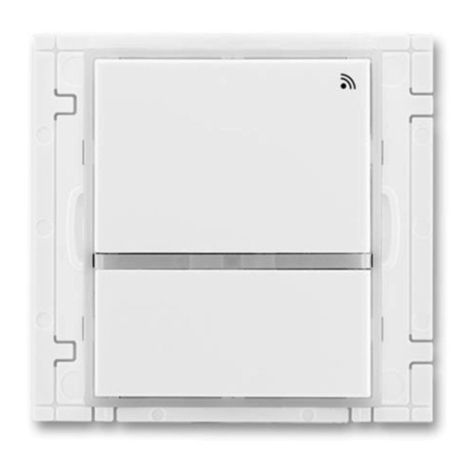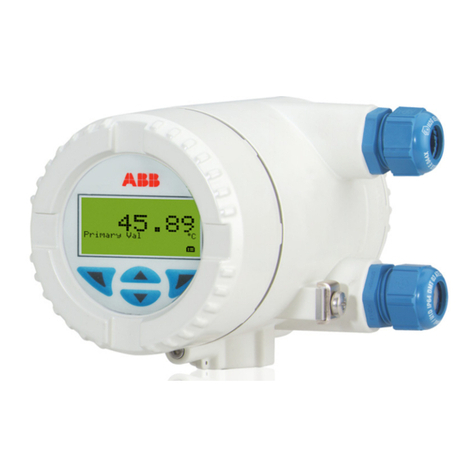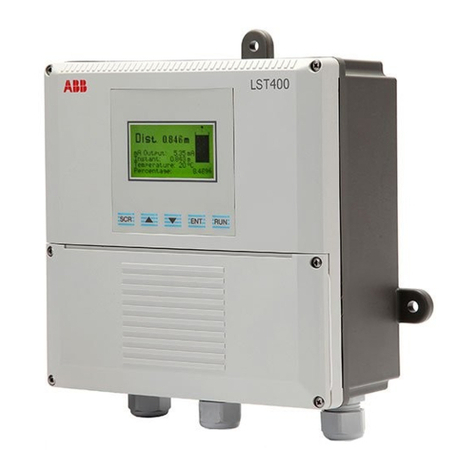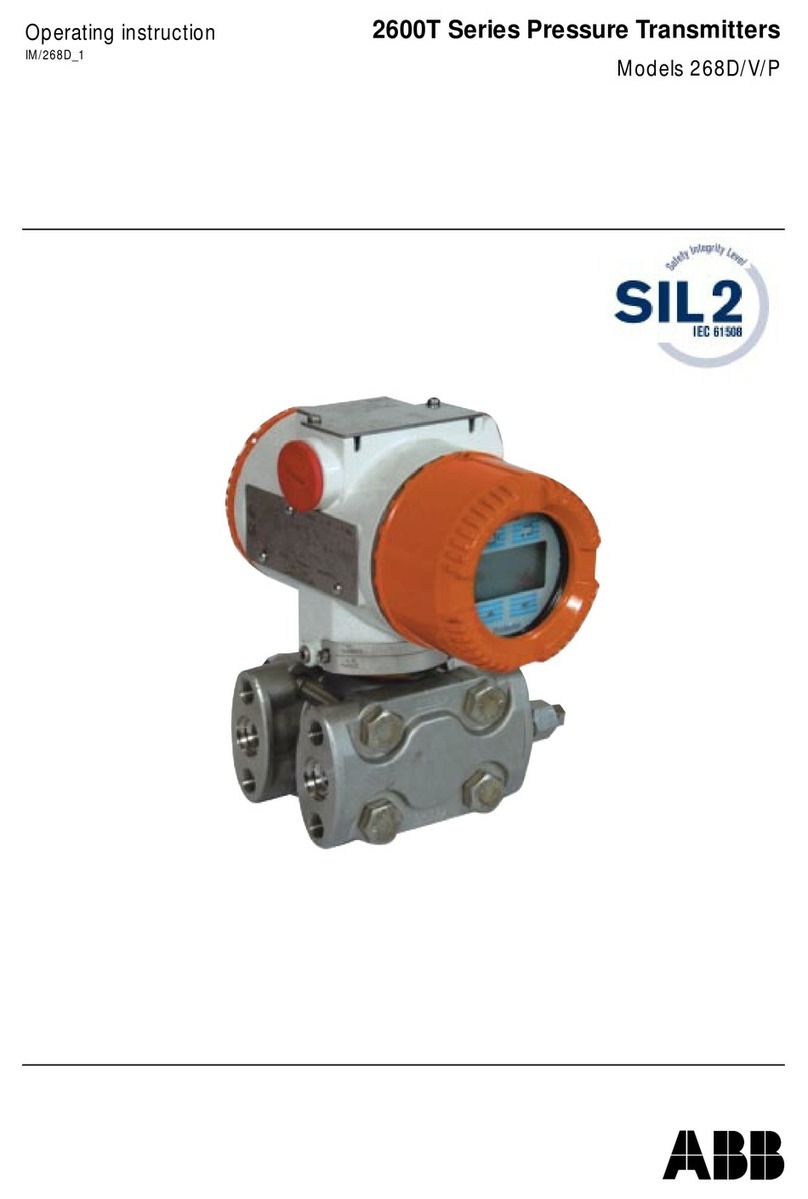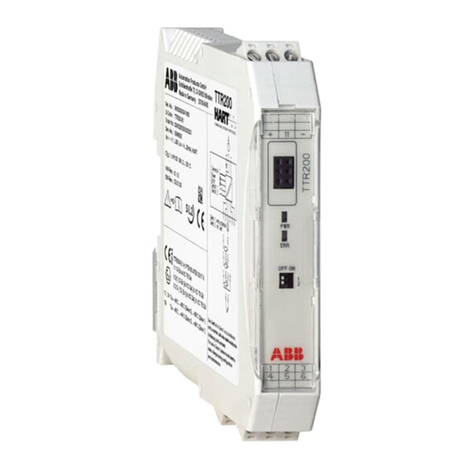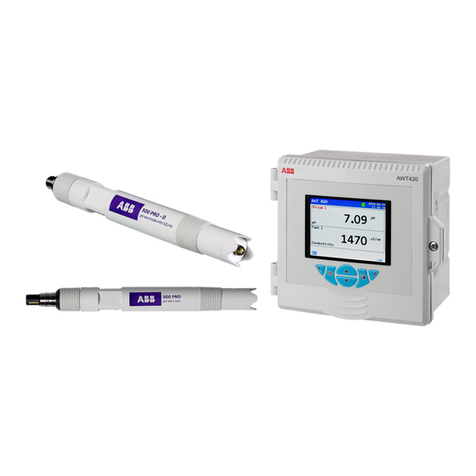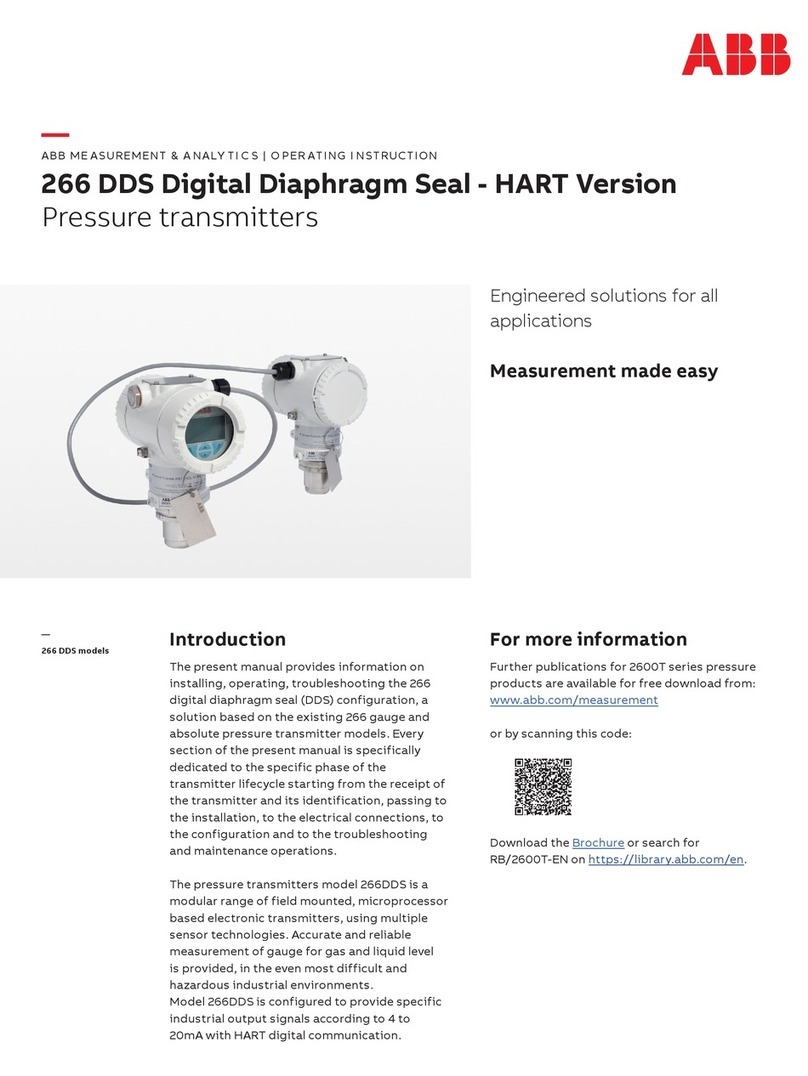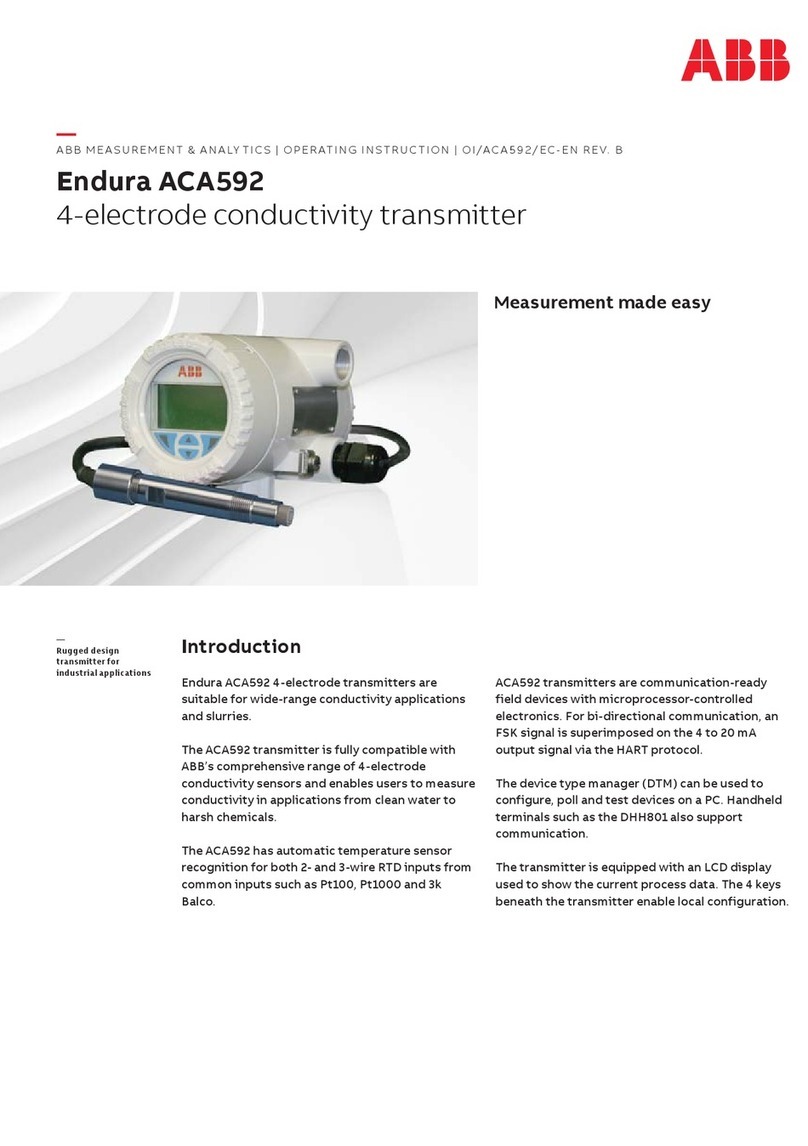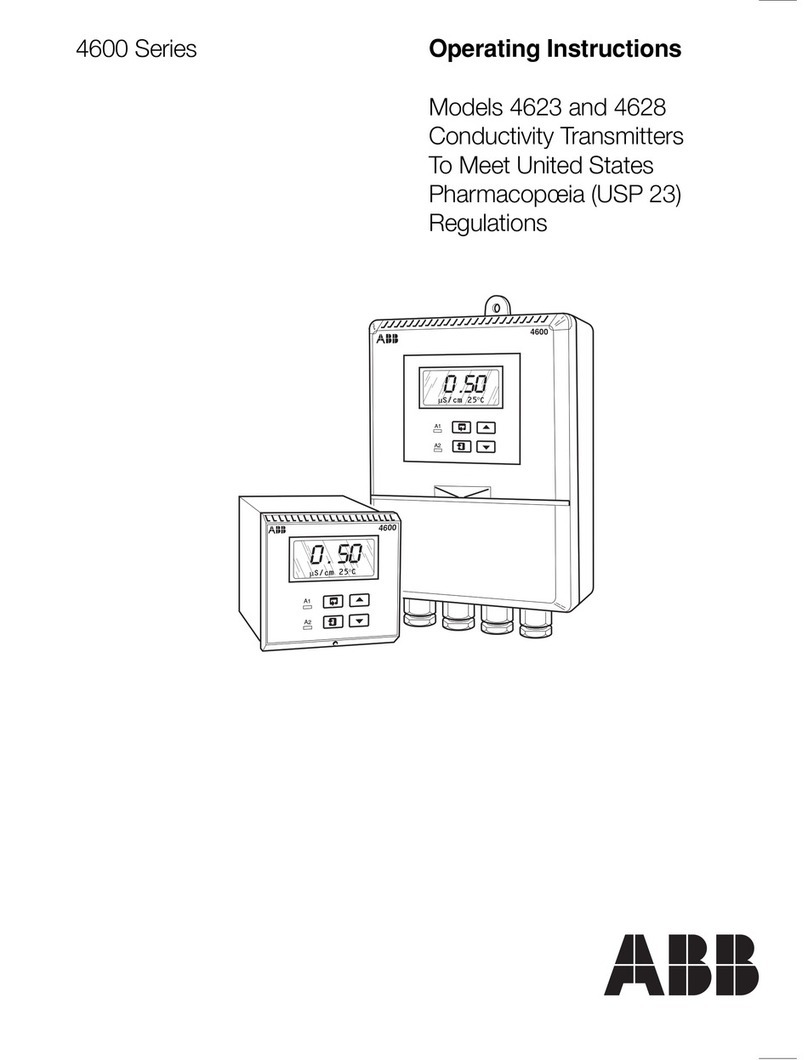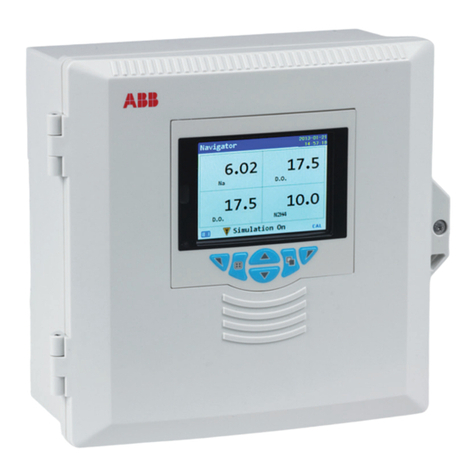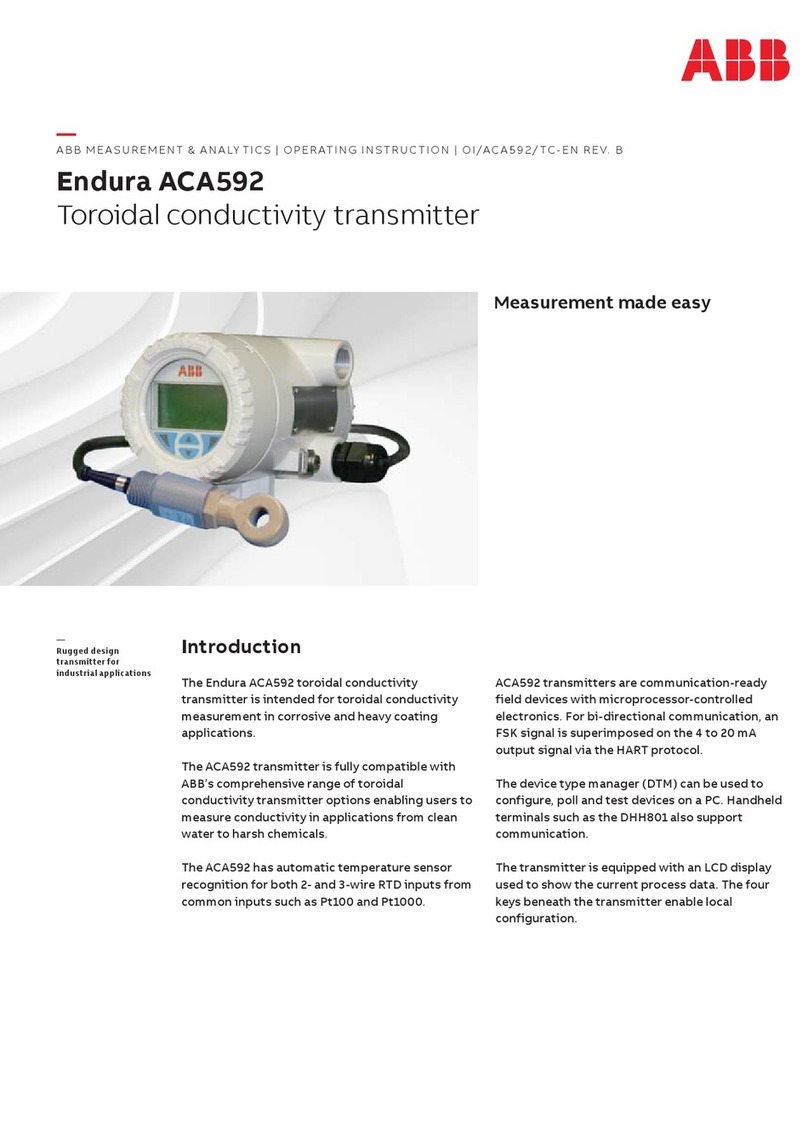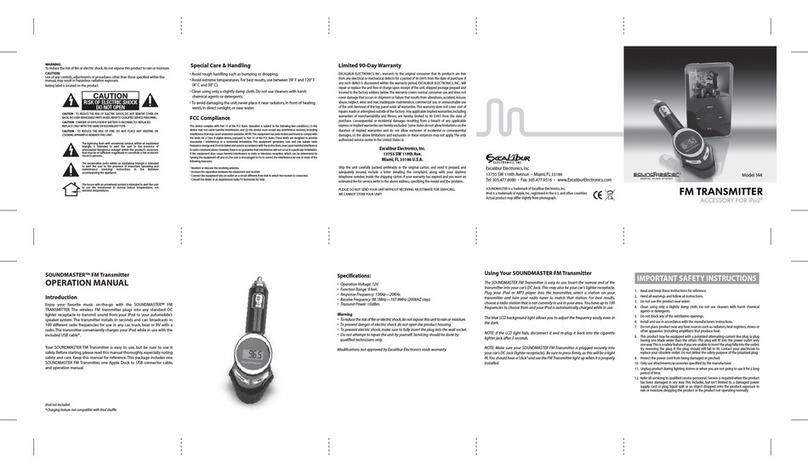
3266HSH MODBUS TRANSMITTER | PRESSURE/TEMPERATURE MULTIVARIABLE | OI/266HSHMT-EN REV. A
1 Introduction
1.1 Instruction manual structure
The present manual provides information on installing,
operating, troubleshooting the 266 pressure transmitter.
Every section of the present manual is specifically dedicated
to the specific phase of the transmitter lifecycle starting
from the receipt of the transmitter and its identification,
passing to the installation, to the electrical connections, to
the configuration and to the troubleshooting and
maintenance operations.
1.2 Models covered by this manual
The present manual can be used for the Modbus 266
pressure model.
1.3 Product description
The pressure transmitters model 266 is a modular range of
field mounted, microprocessor based electronic
transmitters, using multiple sensor technologies. Accurate
and reliable measurement of gauge pressure in the even
most difficult and hazardous industrial environments.
2 Safety
2.1
The “Safety” section provides an overview of the safety
aspects to be observed for operation of the device.
The device has been constructed in accordance with the
state of the art and is operationally safe. It has been tested
and left the factory in perfect working conditions. The
information in the manual, as well as the applicable
documentation and certificates, must be observed and
followed in order to maintain this condition throughout
the period of operation.
Full compliance with the general safety requirements must
be observed during operation of the device. In addition to
the general information, the individual sections in the
manual contain descriptions of processes or procedural
instructions with specific safety information.
Only by observing all of the safety information can you
reduce to the minimum the risk of hazards for personnel
and/or environment. These instructions are intended as an
overview and do not contain detailed information on all
available models or every conceivable event that may occur
during setup, operation, and maintenance work.
For additional information, or in the event of specific
problems not covered in detail by these operating
instructions, please contact the manufacturer. In addition,
ABB declares that the contents of this manual are not part
of any prior or existing agreements, commitments, or legal
relationships; nor are they intended to amend these.
All obligations of ABB arise from the conditions of the
relevant sales agreement, which also contains the solely
binding warranty regulations in full. These contractual
warranty provisions are neither extended nor limited by the
information provided in this manual.
Only qualified and authorized specialist personnel should be
charged with installation, electrical connection, commissioning, and
maintenance of the transmitter. Qualified personnel are persons who
have experience in installation, electrical wiring connection,
commissioning, and operation of the transmitter or similar devices,
and hold the necessary qualifications such as:
—
Training or instruction, i.e., authorization to operate and maintain
devices or systems according to safety engineering standards for
electrical circuits, high pressures, and aggressive media
—
Training or instruction in accordance with safety engineering
standards regarding maintenance and use of adequate safety
systems.
For safety reasons, ABB draws your attention to the fact that only
sufficiently insulated tools conforming to EN 60900 may be used.
Since the transmitter may form part of a safety chain, we recommend
replacing the device immediately if any defects are detected. In case of
use in Hazardous Area non sparking tools only must be employed.
In addition, you must observe the relevant safety
regulations regarding the installation and operation of
electrical systems, and the relevant standards, regulations
and guidelines about explosion protection.
Warning. The device can be operated at high levels of pressure
and with aggressive media. As a result, serious injury or
significant property damage may occur if this device is
operated incorrectly.
2.2 Improper use
It is prohibited to use the device for the following
purposes:
— As a climbing aid, e.g., for mounting purposes.
— As a support for external loads, e.g., as a support for
pipes.
— Adding material, e.g., by painting over the name plate
or welding/soldering on parts.
— Removing material, e.g., by drilling the housing.
Repairs, alterations and enhancements, or the installation
of replacement parts are only permissible as far as these
are described in the manual. Approval by ABB must be
requested for any activities beyond this scope. Repairs
performed by ABB-authorized centers are excluded from
this.
2.3 Technical limit values
The device is designed for use exclusively within the values
stated on the name plates and within the technical limit
values specified on the data sheets.
The following technical limit values must be observed:
— The Maximum Working Pressure may not be
exceeded.
— The Maximum ambient operating temperature may
not be exceeded.
— The Maximum process temperature may not be
exceeded.
— The enclosure method of protection type must be
observed.
